Expert's Rating
Pros
- Slimmest and lightest foldable on the market
- Bright and vibrant displays
- Solid cameras and performance
Cons
- Slightly outdated processor
- Ships with Android 13
- Very expensive
Our Verdict
If you like the idea of a big-screen foldable but are put off by the size and weight that usually comes as part of the package, the Honor Magic V2 could be your perfect companion. The delayed European launch means that some of the hardware is no longer cutting-edge, but the phone still performs brilliantly and is well worth your Consideration.
The Honor Magic V2 launched in China in the summer of 2023, and made a splash as the slimmest book-style foldable so far. The international launch took its sweet time, though, with the phone not available to buy in Europe until January 2024.
The Magic V2 launched with cutting-edge specifications, but things move quickly in the world of smartphones, and that means the processor is slightly outdated at the time of the European launch. Most flagships are shipping with the Snapdragon 8 Gen 3, while the Magic V2 runs the older Snapdragon 8 Gen 2.
In practice, it’s not really an issue, it’s still a very fast processor and no other flagship foldable is offering a newer chip. The OnePlus Open and Galaxy Z Fold 5 also run on the Snapdragon 8 Gen 2, for example. But it won’t stay that way for long.
The Magic V2 costs £1699 in the UK, and that’s a hefty sum for a phone with ageing hardware, but with a slick, lightweight design and promising specs elsewhere, it could still prove worthwhile. I was excited to see how it stacks up against the competition, and after spending a week using it as my main device, here’s my verdict.
Design & Build
- Super slim and lightweight
- Titanium hinge
- No IP rating
I’m testing the special edition Porsche Design Magic V2 RSR, but for the purposes of this review, I’ll be talking about the Magic V2 in general. Aside from the looks, the two phones offer identical specifications and features.
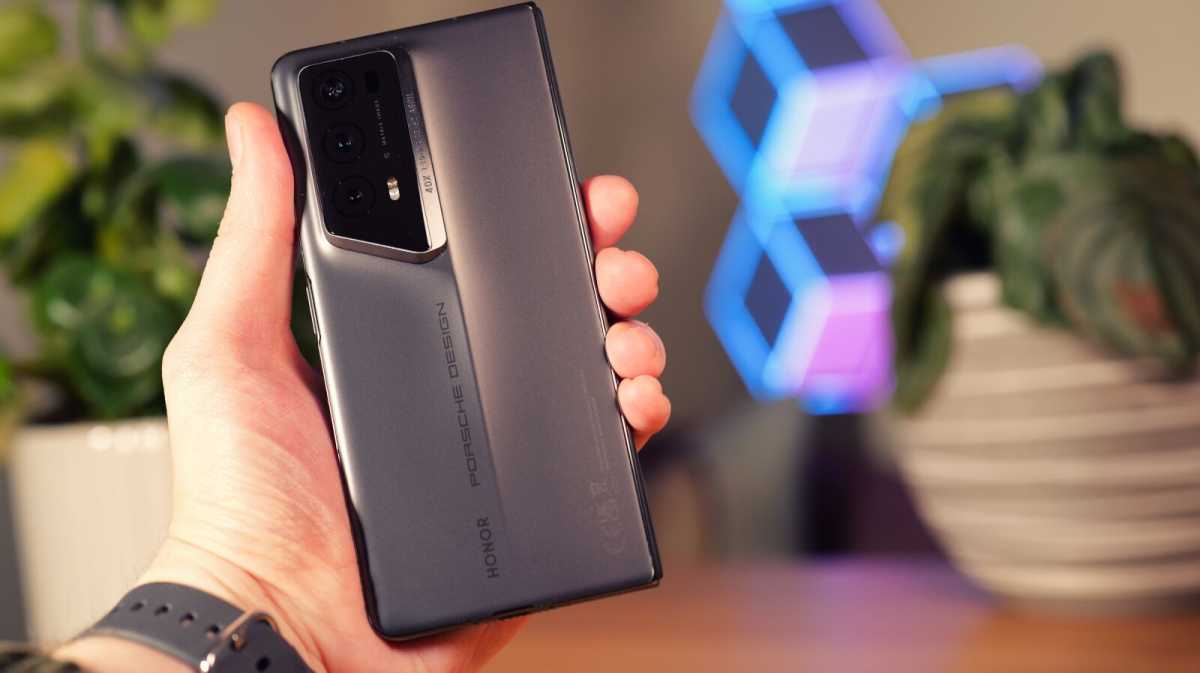
Luke Baker
That said, if you do opt for the Porsche Design edition, you’re in for a visual treat. The rear has a lovely Agate Grey finish, with an aerodynamic ridge down the centre and a sleek sweeping curve over the camera array. It’s designed to resemble the lines of a high-end sportscar (like a Porsche, funnily enough) and it just looks luxurious.
Comparatively, the standard Magic V2 is a little less striking, with a mostly flat rear panel and comfortable curved edges. There are two options to choose from there – Black and Purple – with the former featuring a vegan leather rear panel and the latter made from glass.
The first thing you’ll notice about the Magic V2 is just how slim it is. At just 9.9mm when closed, it’s really quite a remarkable achievement. A weight of 231g means it’s lighter than the Samsung Galaxy S24 Ultra, and it’s thinner than some non-foldable phones, including the Vivo X100 Pro (if you factor in its gigantic camera bump).
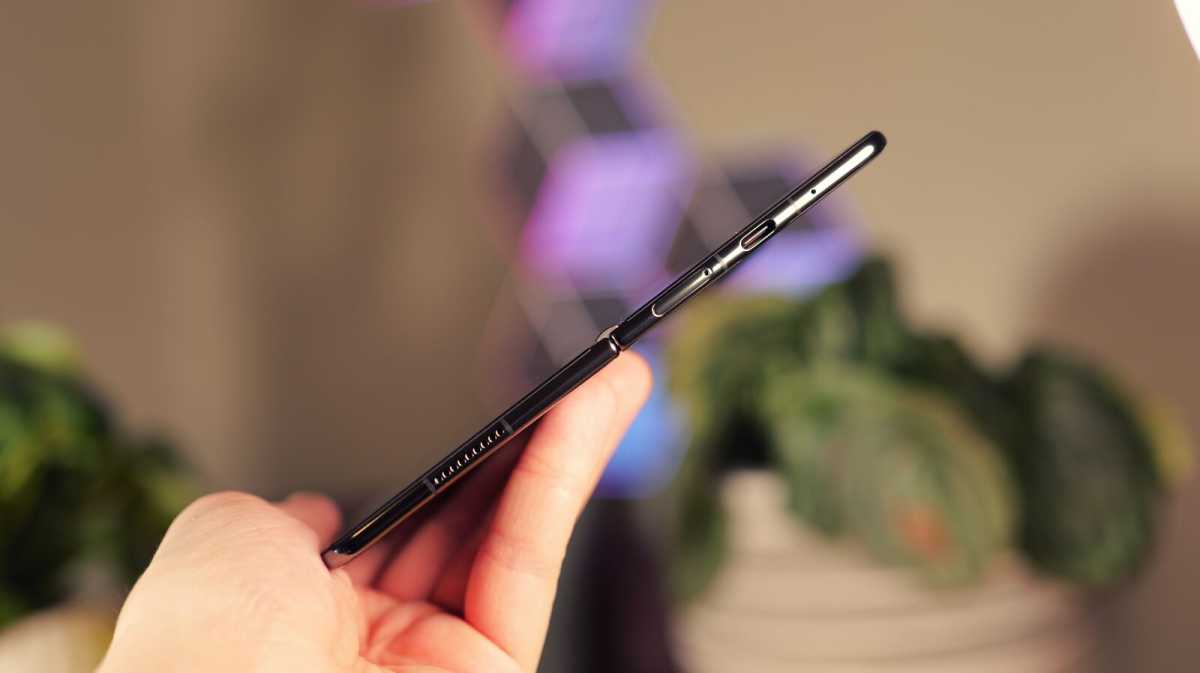
Luke Baker
I have previously shied away from using a foldable long-term, as I always felt they were too bulky and heavy, but that’s not the case here at all. I could easily see myself living with the Magic V2 in my pocket.
The volume rocker and lock button are positioned on the right-hand side when the phone is folded, but they’re each on different sides of the internal display. This means they’re staggered by a few millimetres. It’s easy to get used to, but it can make multi-button presses, like taking a screenshot, feel very strange at first. The fingerprint reader is built into the lock button and works very reliably.
I could easily see myself living with the Magic V2 in my pocket
The standard Magic V2 comes with an aramid fibre case with integrated kickstand, which is pretty nice.
However, if you opt for the Porsche Design edition, you’ll get one of the nicest cases I’ve ever used. It has a PU leather finish that feels like a car interior, and has stitching to matches the lines of the rear panel. It looks and feels great, and it extends to protect the titanium hinge, which is something that’s missing on most foldable case designs.
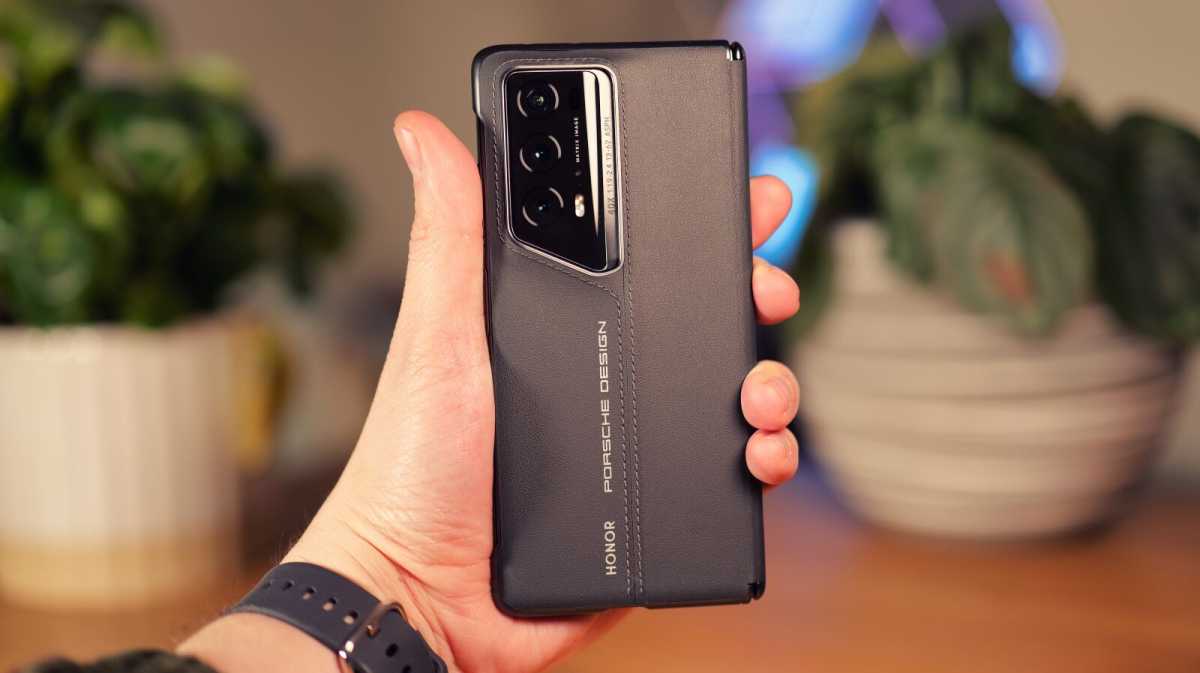
Luke Baker
The Porsche Design package also comes with the Honor Magic Pen active stylus, as well as a presentation box to keep it safe. This is an accessory that’s sold separately in some regions, but it’s not yet available for standalone purchase in the UK.
The stylus works well on both the internal and external displays, which gives it a leg up over Samsung, as the S Pen only works on the folding display of the Z Fold 5. There was a little more latency than I would like, but the pen tracks well, and registers pressure reliably, too.
I’d be careful with that internal display, though, as I can easily image it getting scratched by some enthusiastic doodling.
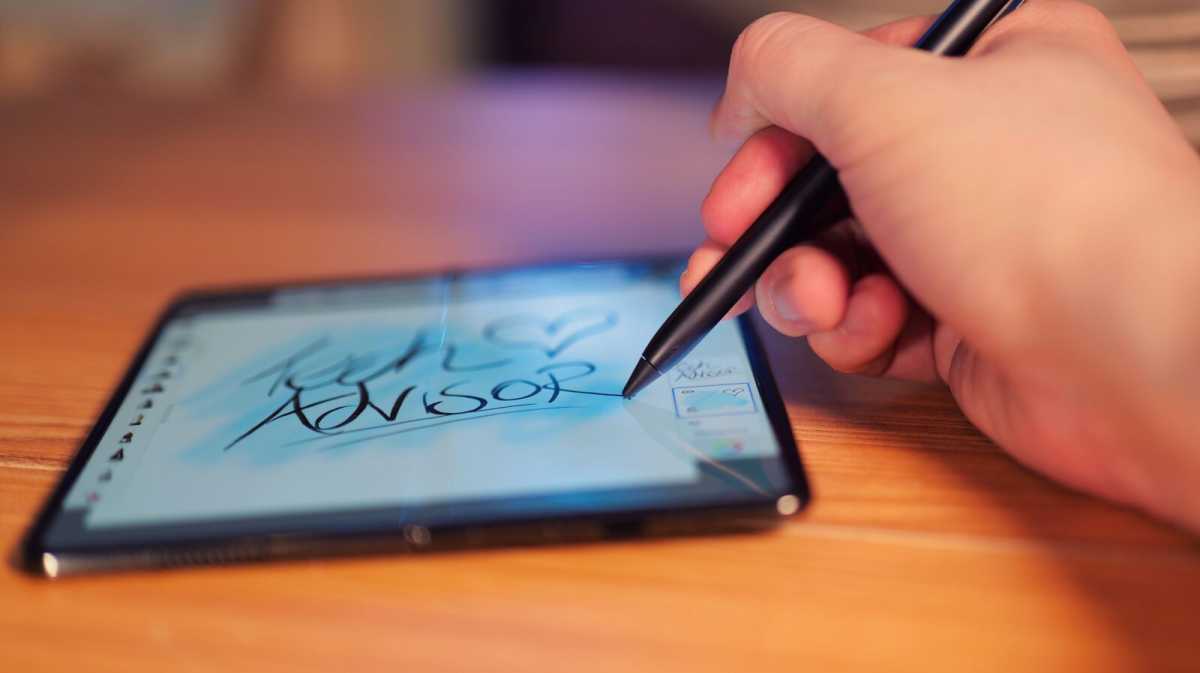
Luke Baker
There’s no official IP rating on this phone, either, but Honor assures us that it’ll be fine with splashes of water. You’ll need to be more careful of dust, but that’s true of all foldables.
Screen & Speakers
- 6.43-inch and 7.92-inch OLED displays
- 120Hz LTPO, 3840Hz PWM dimming
- Stereo speakers
The displays on the Magic V2 are each impressive in their own right. Both the 6.43-inch cover and 7.92-inch internal screens are OLED, with support up to 120Hz refresh rates and PWM dimming rates of up to 3840Hz. This is one of the highest dimming speeds that I have ever come across, so if you suffer eye strain from screen flicker, this could be the foldable for you.
LTPO displays mean the refresh rate can also drop all the way down to 1Hz automatically, helping to save battery life.
When it comes to brightness output, the external screen boasts a whopping 2500 nits at peak, whereas the internal display maxes out at 1600 nits. They’re both bright, and perfectly usable outdoors, but the outer display will be your best bet in harsh sunlight. That’s true in general, anyway, as the flexible panel attracts more unwanted reflections than the smooth glass of the outer screen.
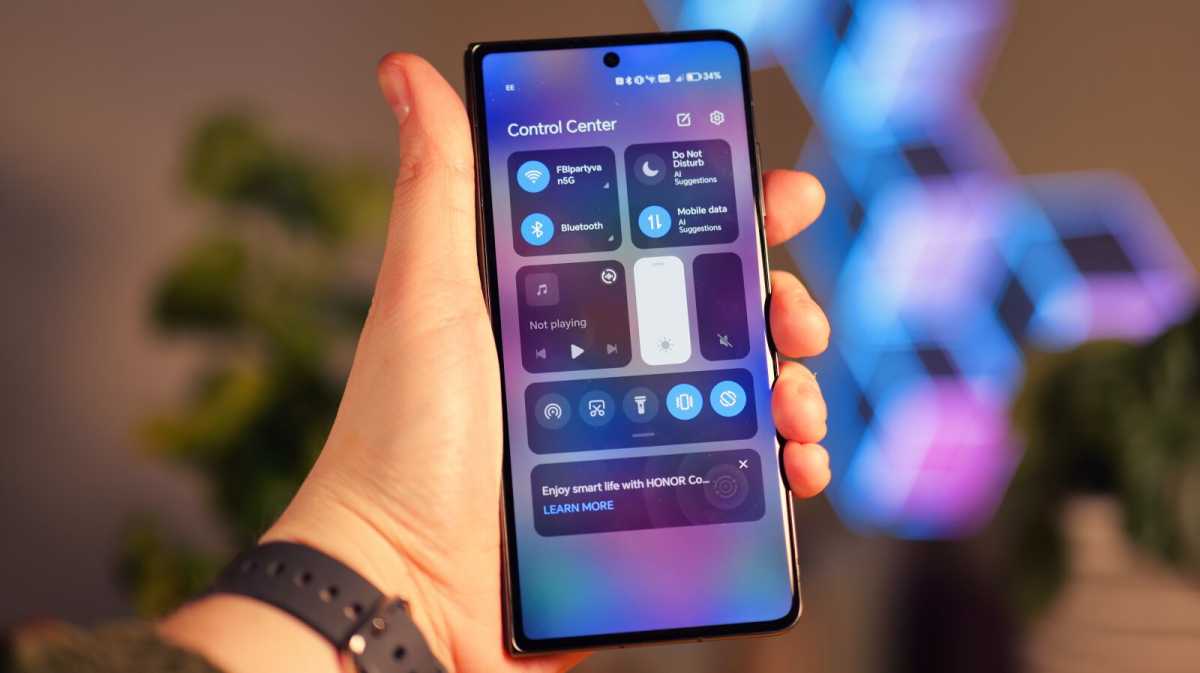
Luke Baker
The outer display has dimensions that match most non-foldable smartphones, and that’s one of my favourite things about the Magic V2’s design. You can easily mistake it for a standard smartphone, and I often did, by picking up the wrong phone from my desk. I’ve never had that happen with a foldable before, and the result is that it feels extremely natural, whether in the hand or the pocket.
If you suffer eye strain from screen flicker, this could be the foldable for you
When you open up the Magic V2, you’re greeted by one of the largest panels of any foldable, and one of the shallowest creases, too. It’s not completely invisible, and you can still feel it when you run your finger across the screen, but it’s much better than the dip you get with Samsung or Google. You’ll only really notice it when it catches the light, and in dim conditions, it essentially vanishes.
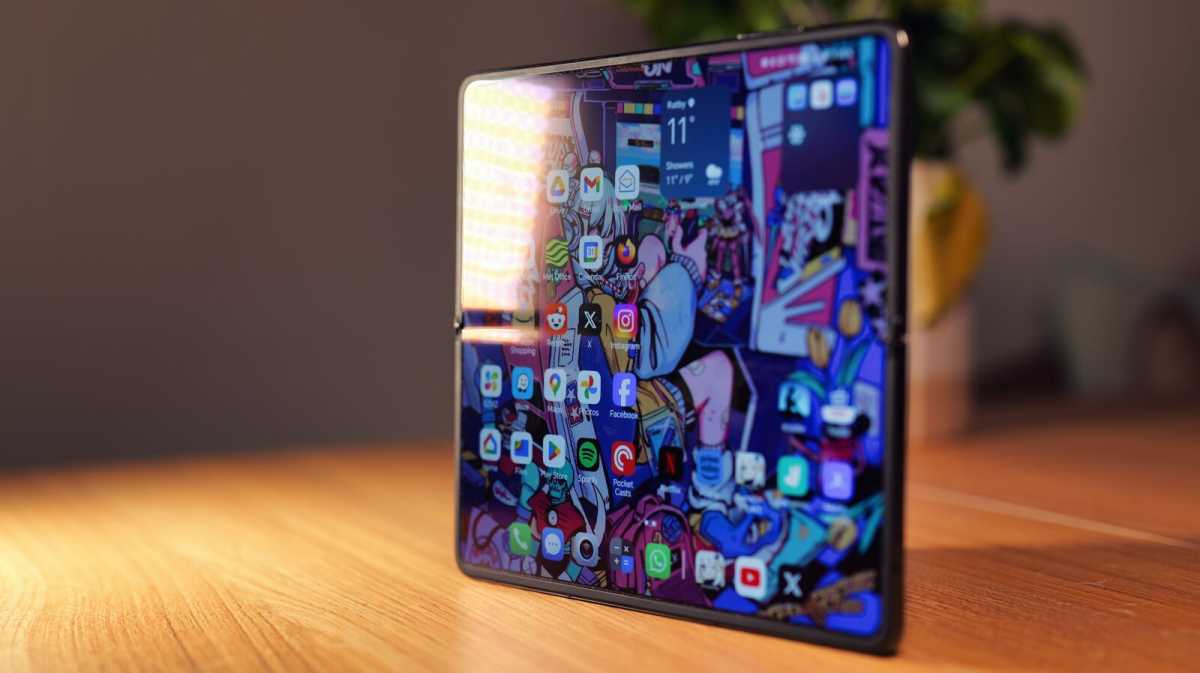
Luke Baker
Both panels are high-resolution and produce vivid and accurate colours. I especially enjoyed catching up on Netflix shows on the large internal screen, which always looked their best thanks to Dolby Vision and HDR10 support. Gaming on the internal screen is very fun, too. Not all games like the square-ish aspect ratio, but Genshin Impact works well, and that’s my favourite time-sink lately.
The speakers are positioned on the top and bottom of the Magic V2 while folded, or on the left and right unfolded, depending on how you hold it. You get some solid stereo separation and more bass than most phones, but they’re not the loudest around. They always sound great and there’s little to no distortion, so as long as you’re not listening next to a construction site, you’re in for a good time.
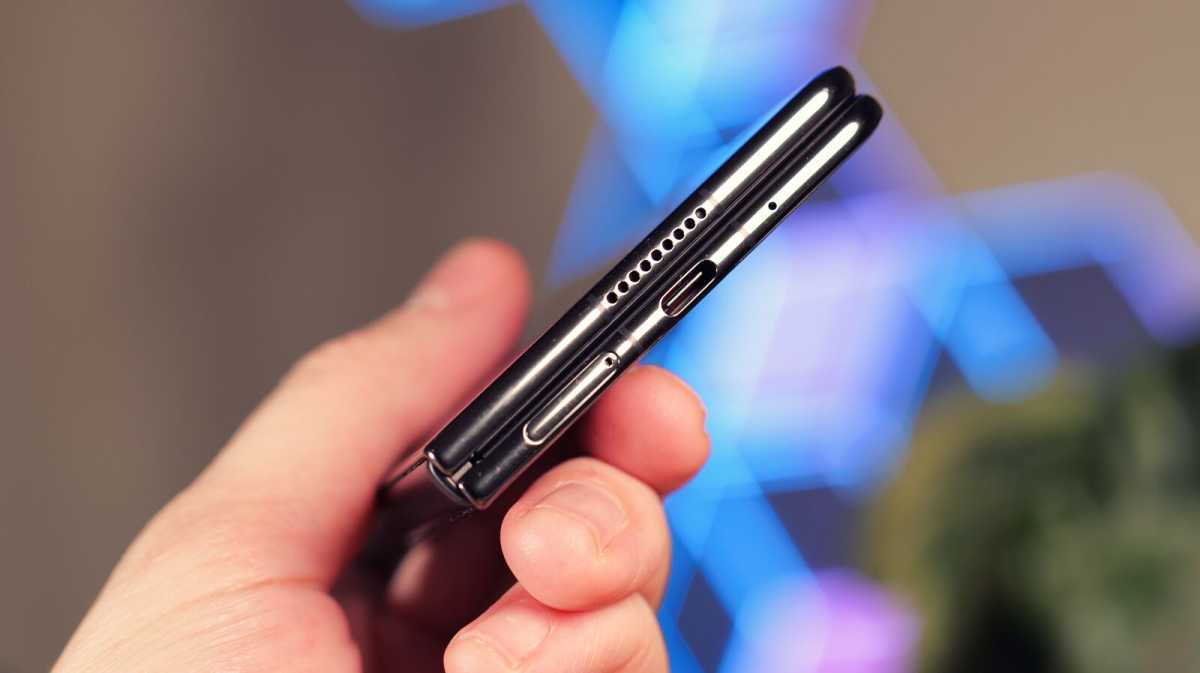
Luke Baker
Specs & Performance
- Qualcomm Snapdragon 8 Gen 2
- 16GB RAM
- 512GB/1TB storage
As I mentioned in the introduction, the Magic V2 runs on the Snapdragon 8 Gen 2. It was Qualcomm’s flagship chip when the phone launched in China, but after a long wait for the international release, it’s now slightly outdated.
However, if we ignore other flagship phones and strictly focus on foldables, the Magic V2 it matches its main competition in terms of performance, and in some ways, it beats them. It has more RAM than the Z Fold 5, and the Porsche Design edition offers double the storage of the OnePlus Open, for example. The only problem is, proper 2024 foldables are on the horizon (at the time of writing), and they’re guaranteed to pack newer processors than this.

Luke Baker
That said, I never found that this chip held me back in use. The Snapdragon 8 Gen 2 is still extremely powerful and the Magic V2 feels consistently fast and responsive. I was able to fully max out the settings in Genshin Impact, running it on the large folding display at 60fps, and I never noticed any stuttering or slowdowns.
Honor has also worked with Asphalt 9: Legends makers Gameloft to ensure that the game runs smoothly at the full 120fps.
The phone gets a bit toasty if you’re playing for a while, but never to the point of concern. It’s impressive stuff considering how slim this phone is, as there’s not much room for cooling, but whatever Honor has done internally works wonders.
The Magic V2 feels consistently fast and responsive
The Magic V2 multitasks well, too, likely owing to the generous 12GB of RAM. It had no problem running multiple apps on the internal display, whether in split-screen mode or as floating windows.
You can also choose between 512GB and 1TB of fast UFS 4.0 storage. There’s no support for expandable storage, but pretty much no-one will need it.
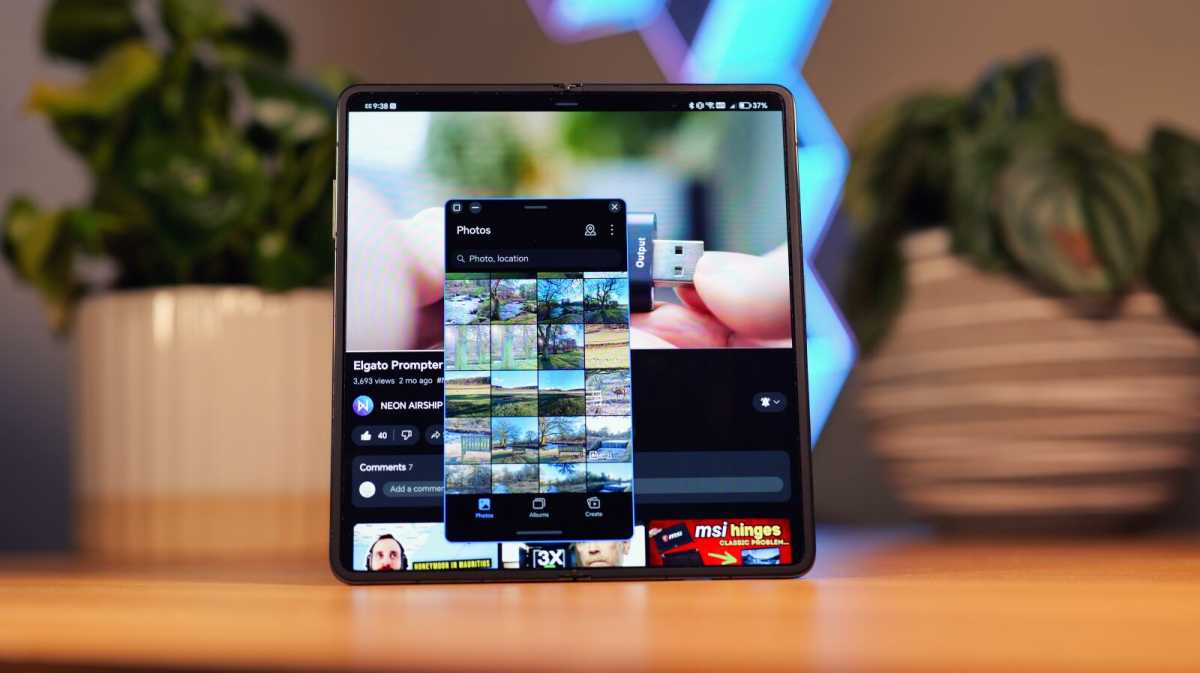
Luke Baker
Honor Magic V2 benchmarks
Here’s how the Magic V2 compares to some of the best book-style folding phones around, including its predecessor:
Cameras
- 50Mp main sensor
- 50Mp ultrawide
- 20Mp 2.5x telephoto
- Dual 16Mp selfie cameras
The Magic V2 packs in a lot of cameras, as most foldables do. Around the back, there are three lenses: a 50Mp f/1.9 main camera, a 50Mp f/2.0 ultrawide (that doubles up as a macro lens) and a 20Mp f/2.4 2.5x telephoto. These are joined by dual 16Mp punch-hole selfie cameras on each display, and you can also take selfies with the rear cameras using the cover display as a preview.
This camera system is capable of taking some great pictures. There’s plenty of detail from all of the rear cameras, and on the whole, the images look sharp and vibrant.
The colour processing is a little more aggressive than I’m used to, with blues and greens tending to be a slightly oversaturated, but it makes for some eye-catching photos.
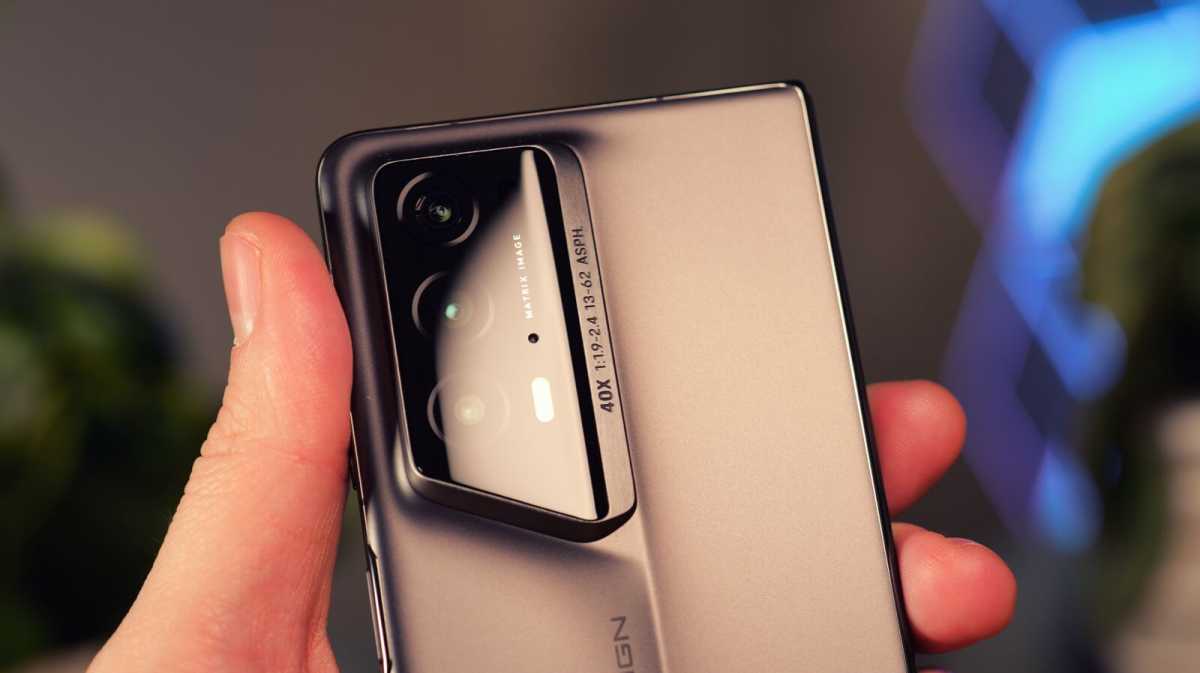
Luke Baker
If you prefer a more natural look, the Pro mode gives you some more control over the final image, and you can even shoot RAW in the native camera app if you want complete control.
The main sensor is the most impressive, as usual, but the supporting lenses are solid, too. The ultrawide is the least sharp, but it’s a useful focal length, and the high-resolution sensor ensures that detail is retained. The 2.5x telephoto is great in the daylight, too, but it struggles a little more when the light gets low.
This camera system is capable of taking some great pictures
After living with flagship phones that offer 5x (or similar) telephoto cameras, I couldn’t help but wish for more reach with this camera system. The 2.5x is nice, but it feels less versatile than a longer zoom. The camera app offers you a 10x zoom option, but it’s best avoided, as the images come out looking muddy and lacking detail. It’s just too much of a digital crop for the 2.5x lens to handle.
Portrait mode works very well, and the Magic V2 was able to reliably separate my subjects from the background in a variety of lighting conditions. Night mode is good, too, but you’ll want to stick to the main lens at night, as the smaller sensors of the ultrawide and telephoto give less detailed images in these conditions.
The rear cameras can all shoot video at up to 4K60 and the front-facing cameras support 4K30. Results are decent, but the stabilisation lags behind some of the competition. There are plenty of options in the app for video shooters, though, including the ability to apply LUTs (look-up tables) and even a LOG profile.
Battery Life & Charging
- 5000mAh battery
- 66W charging support
- Power adapter only included with Porsche Design edition
The battery life of the Magic V2 is brilliant, and this is all thanks to a massive 5000 mAh battery that has somehow been squeezed into the slim chassis. It’s the largest battery among the current foldable crowd, and the fact that it’s in the slimmest model must have taken some serious engineering.
I was using the phone quite heavily during my testing period, frequently watching YouTube videos on the large internal display, shooting tonnes of photos and multitasking. Even with all of that, the Magic V2 never failed to see me through the day, and I usually went to bed with plenty of battery to spare.
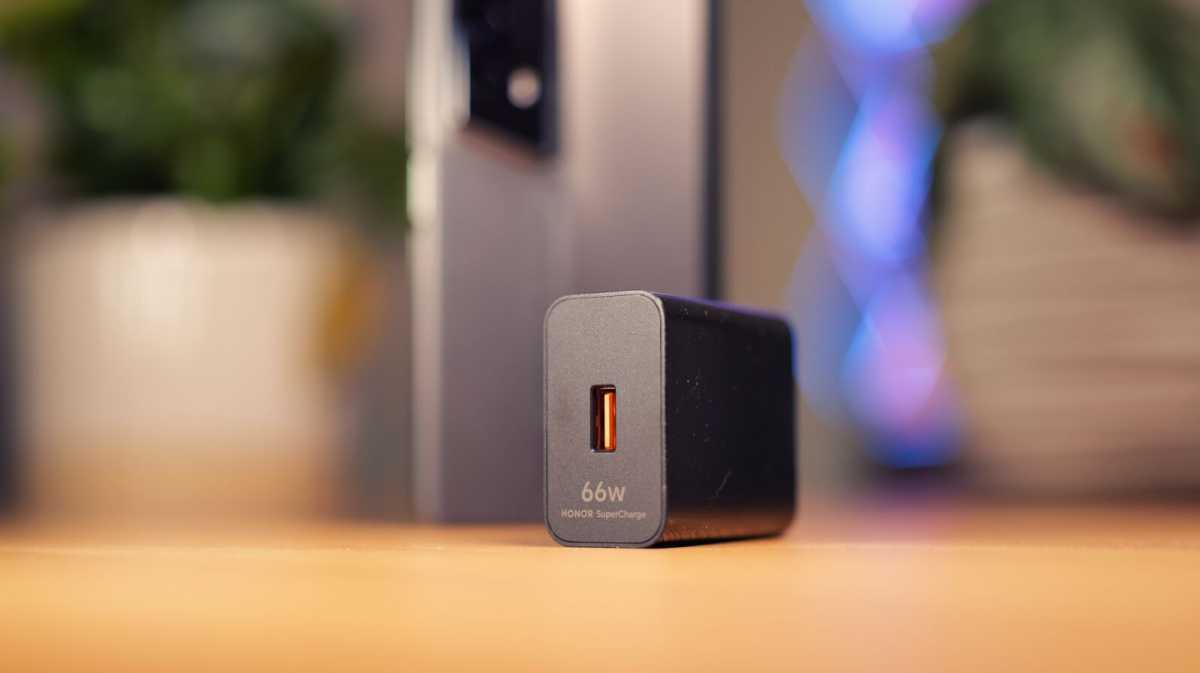
Luke Baker
You can quite easily achieve a day and a half on a charge, and when it does run out, you won’t be waiting long. It supports up to 66W wired charging, which is enough to take you from fully drained to 100% in less than an hour.
The standard model only comes with a USB-C cable, and no wall adapter, just like the Z Fold 5. However, if you opt for the Porsche Design edition, you get not one but two 66W chargers in the box in the UK, with EU and UK plugs both included.
Software & Apps
- MagicOS 7.2
- Based on Android 13
- Some bloatware to deal with
The Magic V2 runs Magic OS 7.2 which is Honor’s skinned version of Android 13. The Porsche Design model has a few extra embellishments in the software, including a themed wallpaper and some black and gold app icons, but you can easily switch back to a more traditional look. The Porsche Design theme wasn’t quite to my taste, so that’s exactly what I chose to do.
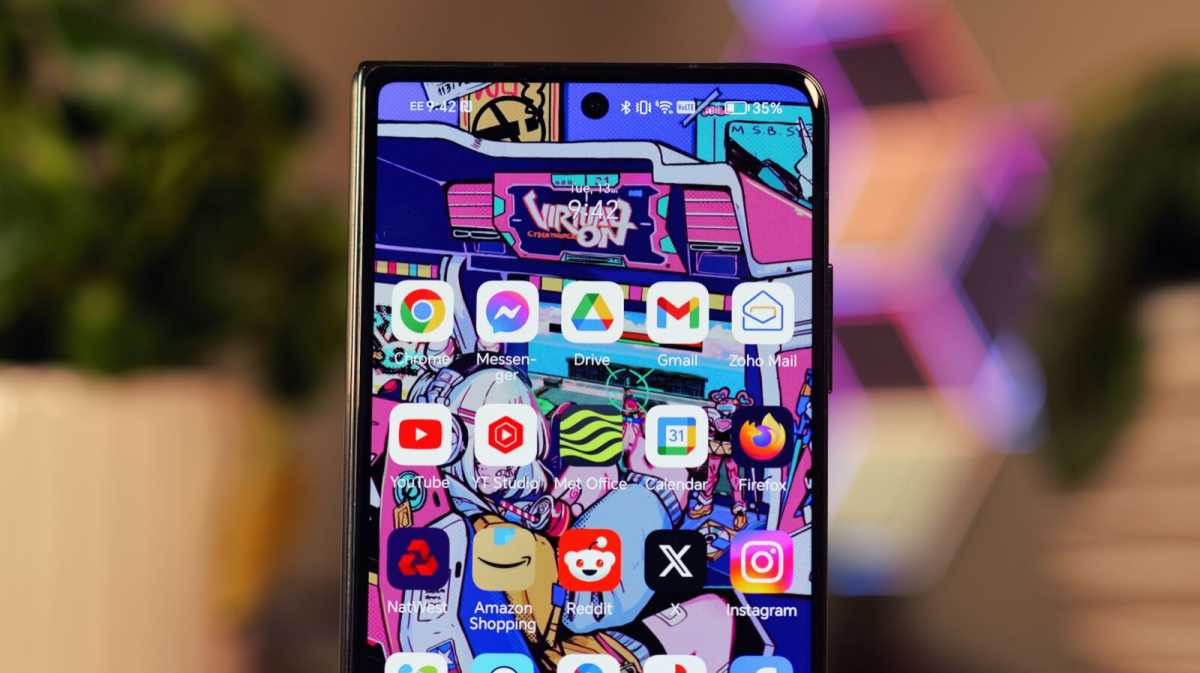
Luke Baker
Most flagship phones are now shipping with Android 14, so it’s a little disappointing to see Android 13 here. It doesn’t make much of a difference to the usability or the feature set, but it means that the Magic V2 will likely end up a version behind the competition.
Honor promises three major OS upgrades and five years of security patches, so it should get to Android 16 in the long run. The Z Fold 5 and OnePlus Open also ship with Android 13, but they get four OS upgrades, so if you plan on keeping the phone for a very long time, those models will stay relevant for longer. On the security side, Honor matches Samsung, and adds an extra year compared to OnePlus.
There’s quite a lot of bloatware pre-installed on the Magic V2, which is disappointing to see
The software ran very smoothly throughout my testing. Animations are stutter-free and there are some useful additions, like enlarged folders that allow you to access up to eight apps without having to open the folder first. There’s plenty of customisation, but it would be nice to see support for lock screen widgets, as Honor’s OS is a little limited on that front.
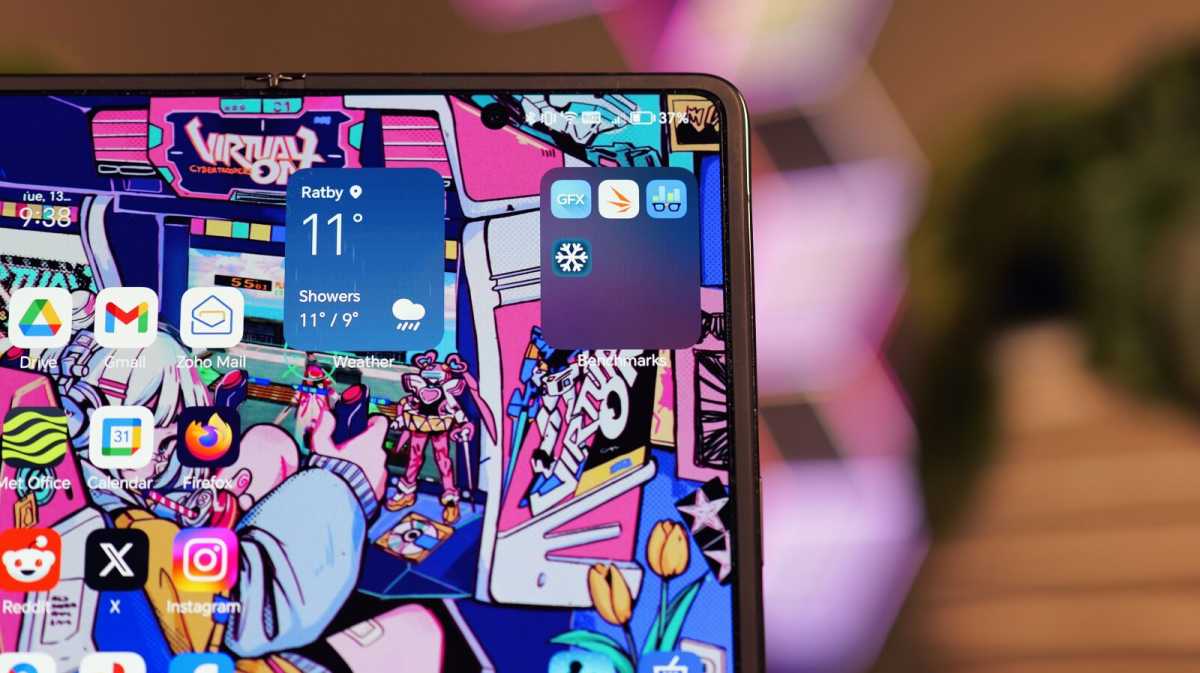
Luke Baker
When it comes to multitasking, you have the option of splitting the display in two, to display apps side-by-side, or you can use floating windows for a more free-form approach. It’s easy enough to use, but it’s not quite as robust or intuitive as Open Canvas mode on the OnePlus Open. Still, for my needs, it was sufficient.
There’s quite a lot of bloatware pre-installed on the Magic V2, which is disappointing to see. Most of the applications are Honor’s proprietary apps, but the likes of Booking.com, TikTok and Facebook are also installed by default. It’s not hard to delete these or tuck them away in the app drawer, but it’s a hassle that you don’t want when you’re spending this much on a smartphone.
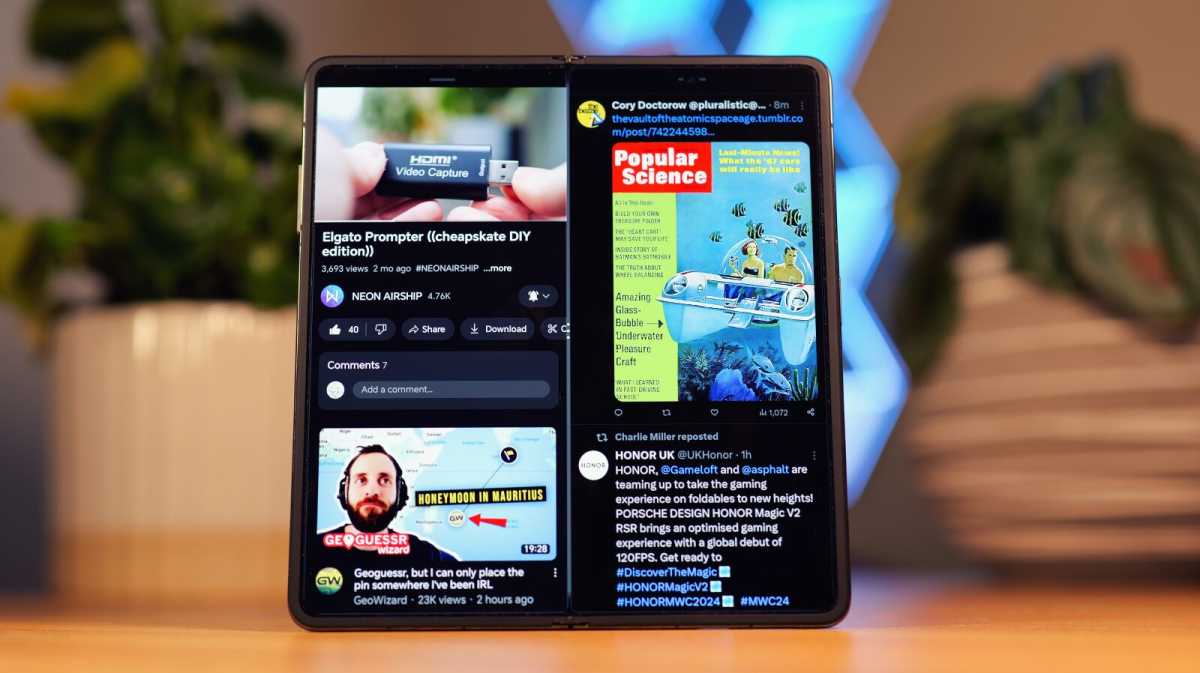
Luke Baker
Price & Availability
The Honor Magic V2 is available now to purchase in the UK and Europe, but as with all other Honor phones, it’s very unlikely to make its way to the US.
It’s only available with 16GB of RAM and 512GB of storage in European markets, and in either a black vegan leather finish, or a purple glass-backed version. All variants retail for £1,699.99/€1,999.90.
You can buy one from the Honor website and Amazon in the UK, where you’ll get a free pair of Bang and Olufsen headphones (worth £459) at the time of writing.
The fancy Porsche Design edition pictured in this review costs more – £2,349.99/€2,699 to be exact. For the additional fee, you get a storage boost to 1TB, a slick design, and some extremely high-quality accessories.
It’s also available from the Honor website.
However, neither model will be available on contract. Your best alternative will be to buy it outright and pair with a SIM-only deal.
The base Magic V2 is very expensive device, albeit not extortionate by book-style foldable phone standards. It’s cheaper than key rivals in the Samsung Galaxy Z Fold 5 (from $1,799.99/£1,748) and Google Pixel Fold (from $1,799/£1,749) in the UK, though the OnePlus Open ($1,699/£1,599) is slightly more affordable.
However, the Porsche Design version is too expensive to make it worth considering for most people.
Should you buy the Honor Magic V2?
The Honor Magic V2 addresses my two biggest issues with foldable smartphones. It has a normal-sized and natural-feeling outer display, and it’s as slim and lightweight as many other non-foldable flagship phones. I’ve loved living with it – the design is excellent and has very few compromises.
Of course, it’s not perfect. The software could use some refinement and the older chipset sours the deal, especially with such premium pricing. On the other hand, this chip performs perfectly well in 2024, and I certainly wasn’t left wanting for performance.
If you like the idea of a book-style foldable, but aren’t keen on the bulk or unusual cover display dimensions, then the Magic V2 could be the way to go. The OnePlus Open is a compelling alternative, with better software implementation, but the battery won’t last quite as long.
Specs
- MagicOS 7.2, based on Android 13
- Outer display: 6.43-inch 2376×1060, OLED, 120Hz
- Inner display: 7.92-inch, 2344×2156, OLED, 120Hz
- Power button fingerprint sensor
- Qualcomm Snapdragon 8 Gen 2
- 16GB RAM
- 512GB / 1TB storage
- Cameras:
- 50Mp, f/1.9 main camera
- 50Mp f/2.0 ultra-wide camera
- 20Mp f/2.4 2.5x telephoto
- Dual 16Mp front-facing cameras
- Stereo speakers
- Dual-SIM
- Wi-Fi 802.11 a/b/g/n/ac/ax/be
- Bluetooth 5.3
- 5000mAh battery
- 66W charging (no charger in box)
- 156.7 x 74 x 9.9 mm (folded)
- No IP certification
- 231g-237g
- Launch colours: Black, Purple, Agate Grey (Porsche Design)

















